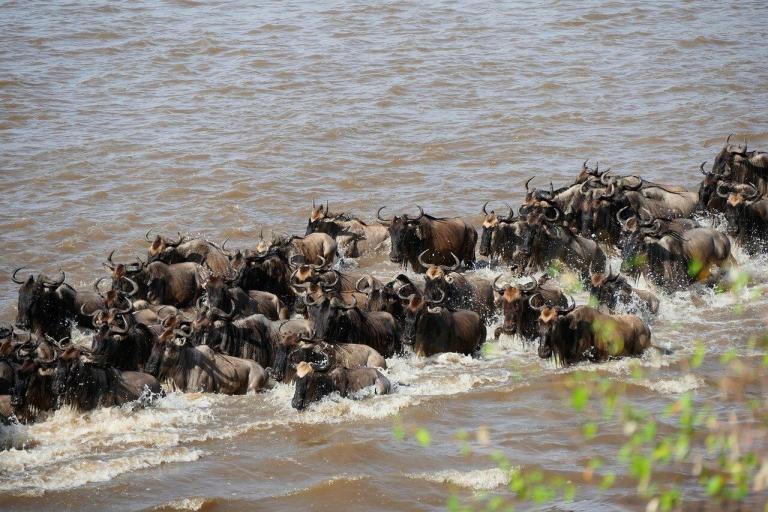Serengeti National Park
Serengeti National Park is arguably the most famous National Park in the world, the Serengeti Ecosystem (the name comes from “siringit” the Masai word for “endless plains”) consists of some 35,000 square kilometres. It extends into the Masai Mara in neighbouring Kenya and provides a vast eco-system for the wildebeest migration that takes place each year. The famed plains are found to the south of the park east of the Seronera Valley, rolling hills in the less-visited Lobo area to the north and wooded riverine valleys to the remote east around Kirawira and Grumeti. The park itself is about 14,763 sq kms in area and encompasses the main part of the Serengeti National Park ecosystem. The ecosystem is defined by the annual migration of over 1,500,000 million wildebeest, zebras and associated predators which occurs throughout the year and extends into the game reserves, game-controlled areas and conservation areas surrounding the park boundaries. As in all ecosystems, the vegetation and type of animals you will find are closely correlated, although it is impossible to say exactly where different species will occur, it is possible to build up a picture of the most likely species to be found in each area. Game viewing experiences can vary enormously on the time of year as well as the location within the park. It cannot be overstressed how important it is to utilize different lodges and camps at different times of the year to maximise the game viewing opportunities. See pre departure info.
- Short Grass Plains
- Long grass plains
- Seronera Valley
- Western Corridor
- Lobo and Northern Serengeti
Short grass plains
The short grass plains occur east of the Naabi Hill gate and extend almost to Olduvai Gorge in the Ngorongoro Conservation Area. The area is characterised by large sweeping plains with a short covering of grass which completely withers during the dry season. On the northern fringes of the plains are granite kopjes, large rocky outcrops which in themselves form unique habitats. On the border of the Serengeti and Ngorongoro Conservation Area is Lake Ndutu. The lakes here are surrounded by acacia forests and it is here that all the accommodation and campsites are to be found. It is also from here that it is possible to do some walking with one of the Ngorongoro Conservation Area rangers on the lake shore. It is on the Short Grass plains during late December through to mid January that the wildebeest herds congregate in large numbers to give birth to nearly 400,000 calves in the first two weeks of February. This is a defence mechanism, as giving birth to large numbers in a very short period overwhelms the predators following the herds. The herds stay in the area till mid to late May, depending on the rains, before splitting up into smaller herds numbering in the tens of thousands of wildebeest all heading west in long straggling columns up to 40 kilometres in length. This is without parallel and is definitely the best game viewing to be had anywhere at anytime in the world! Not only are the massive numbers of wildebeest beyond comprehension, but the prides of lions and groups of cheetahs provide outstanding viewing opportunities.
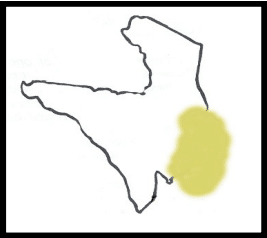
Main Mammals
- Wildebeest - Zebra - Hyena - Cheetah - Lion - Thomson Gazelles - Eland
Seasons
The busiest time of the year, especially the last two weeks in February, accommodation and campsites are at a premium.
Game viewing is still superb, but best of all is the small number of visitors. Can be very wet in April, but still well worth it!
Dry and very dusty, small groups of gazelle and occasional cheetah, more rewarding game viewing elsewhere in the park.
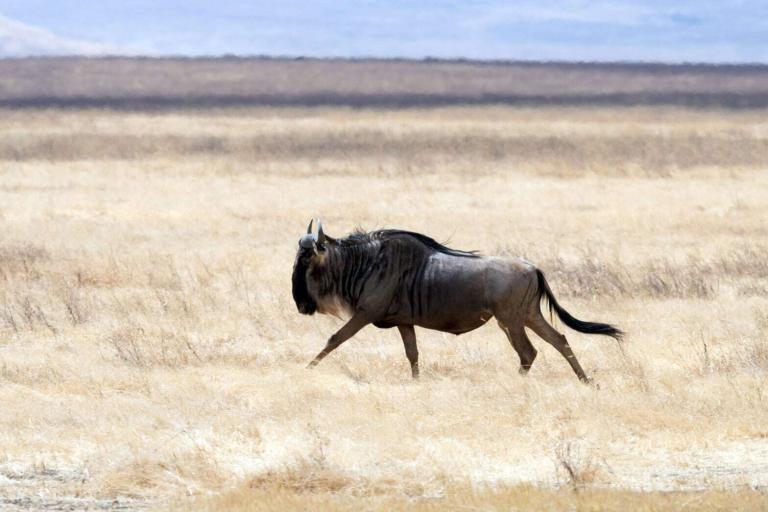
Long grass plains
The long grass plains occur west of the Naabi Hill gate and extend almost to the Seronera valley in the centre of the park. And south to lightly forested hills and ranges forming the south-west border. The area is characterised by large sweeping treeless plains with waist-high grass. Granite outcrops such as those found at the Moru kopjes, and Simba kopjes provide island habitats within the sea of grass. Another unique feature of this area is the small termite mounds, themselves home to smaller mammals such as bat-eared foxes and mongooses, but also in turn used as lookout points for the ubiquitous topi hartebeest which use the mounds as lookout points over the undulating fields of grass. Other antelopes and zebras rarely do so, although Kongoni have also been seen using these termite mounds but less habitually. Topi whose colour is a rich beige have deep blue-black markings on the rump and hindquarters and are not as shy and are more assertive than the Kongoni hartebeest. The topi is a feature of the long grass plains where it does not have to compete with the wandering wildebeest. This area is also home to about 17 (2009 population) Black Rhinos. Although closely watched with 24-hour guards, it is possible with luck to see these animals, especially around the Moru Kopjes.
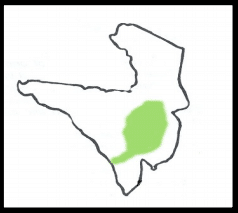
Main Mammals
-Topi Hartebeest - Kongoni Hartebeest - Grants Gazelle - Elephant - Warthog - Hyena - Lion - Leopard - Bat-eared foxes - Rhinoceros
Seasons
The special campsites located at Moru Kopjes are superbly located to catch the migrating animals as they head towards the short-grass plains.
The special campsites situated in the shadows of the Moru kopjes are perfectly located for general game viewing and as the migration moves west.
Difficult to justify as all the action is located further north or west, which would mean long travelling times for game viewing. (except for the rhinoceros found here all year round).
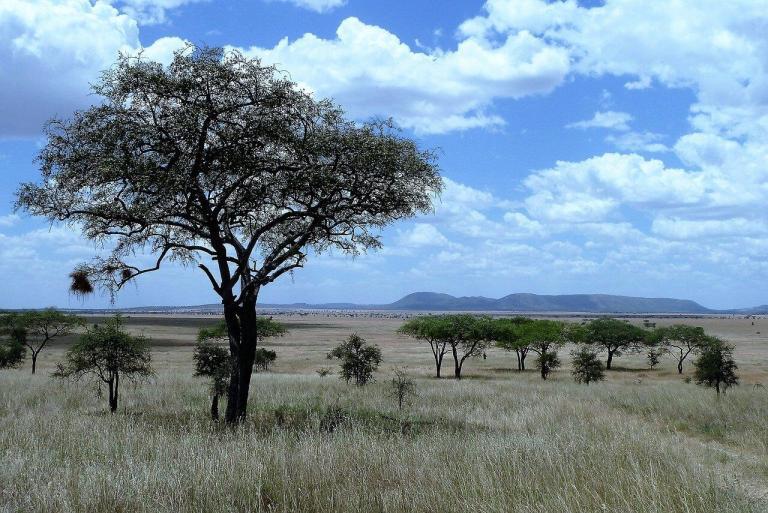
Seronera Valley
Located virtually in the geometric centre of the park, the Seronera Valley provides the best all year game viewing within the National park. The area consists of a varied habitat of acacia riverina and plains of red-oat grasslands. To the east and south are the lightly wooded Nyaraswiga and Mukoma Hills. The Seronera Valley provides probably the widest variety of game viewing in all of the Serengeti park, being on the crossroads for the migration and having a number of permanent water courses. It is justly famous for both leopards and lions, both of which are usually seen in the area without difficulty. Just to the north of the valley along the road to Lobo is the only place where you are likely to see hippopotamus in the Serengeti.
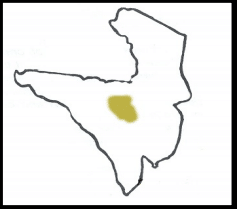
Main Mammals
- Buffalo - Kongoni Hartebeest - Lion - Leopard - Impala - Topi Hartebeest - Waterbuck - Baboon - Vervet Monkey - Zebra - Wildebeest - Hippopotamus
Seasons
Seronera provides some of the best game viewing in Serengeti all year round. Can be slightly harder in the wet season with longer grass.
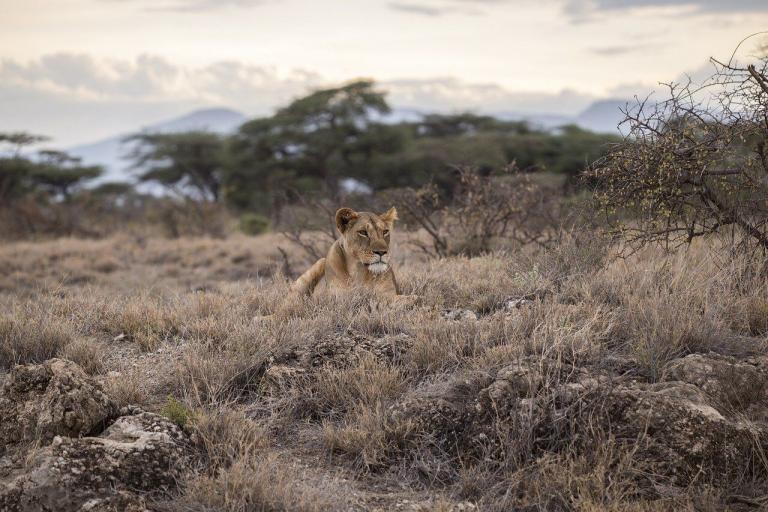
Western Corridor
The long grass plains occur west of the Naabi Hill gate and extend almost to the Seronera valley in the centre of the park. And south to lightly forested hills and ranges forming the south-west border. The area is characterised by large sweeping treeless plains with waist-high grass. Granite outcrops such as those found at the Moru kopjes, and Simba kopjes provide island habitats within the sea of grass. Another unique feature of this area is the small termite mounds, themselves home to smaller mammals such as bat-eared foxes and mongooses, but also in turn used as lookout points for the ubiquitous topi hartebeest which use the mounds as lookout points over the undulating fields of grass. Other antelopes and zebras rarely do so, although Kongoni have also been seen using these termite mounds but less habitually. Topi whose colour is a rich beige have deep blue-black markings on the rump and hindquarters and are not as shy and are more assertive than the Kongoni hartebeest. The topi is a feature of the long grass plains where it does not have to compete with the wandering wildebeest. This area is also home to about 17 (2009 population) Black Rhinos. Although closely watched with 24-hour guards, it is possible with luck to see these animals, especially around the Moru Kopjes.
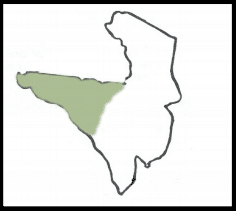
Main Mammals
- Topi Hartebeest - Eland - Impala - Baboon - Wildebeest - Zebra - Lion - Colobus Monkey - Vervet Monkey
Seasons
From the short rains in early November, access to this area is difficult and not all roads would be opened. Game is scarce and hard to find for these reasons
Probably the best period as it is at this time that the wildebeest are moving through the area, and game viewing along the Grumeti is exceptional.
Provides good game-viewing throughout these months, but long distances do not justify stays of only one or two nights.
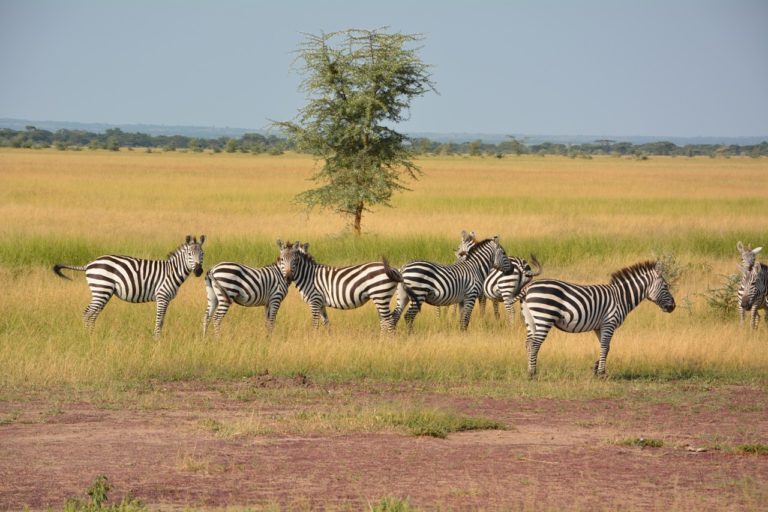
Lobo and the northern Serengeti
The country north of the Seronera Valley towards the Lobo Hills and the Bologonja gate is characterised by rolling upland. The area is covered by bush and sparse woodland, interspersed with open plains and ranges of hills studded with spectacular kopjes. A number of rivers run through the area to the north including the Grumeti River. Elephants are more likely to be seen in this area of the park than anywhere else and their effect on the woodlands is noticeable during the dryer months. Gallery forest including huge fig and mahogany trees line the numerous watercourses. Birdlife is probably more varied in this area of the Serengeti with many colourful birds such as Hartlaubs and Ross’s Turaco and African fish eagles. Also to be found here are a number of mammals not often found elsewhere in the park such as mountain reedbuck, oribi and Patas monkey.
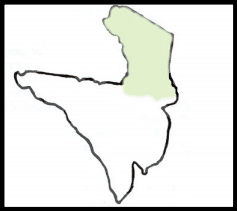
Main Mammals
- Oribi - Duiker - Impala - Reedbuck - Wildebeest - Zebra - Lion - Elephant - Giraffe
Seasons
The wildebeest migration starts arriving in the area from the west sometime late in July, with some resident populations staying in the northern area around Bologonja whilst the rest moves into Kenya. Mid to late in October, the herds start to move down the eastern side towards the short grass plains in the south.
Game viewing is still good as a lot of resident wildlife, but all the action is now in the south on the short grass plains.
